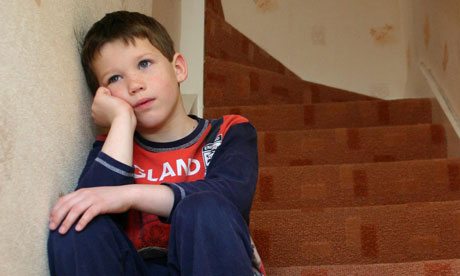
What You Need to Know about Childhood Schizophrenia
Children younger than 12 years old can show the symptoms of schizophrenia, which in this case this condition is called Childhood schizophrenia, which is relatively rare and most of the time hereditary. Schizophrenia, itself, is a complex mental health condition that is still not well understood. It’s believed that stressor play a major role in schizophrenia, and similarly stressor may trigger childhood schizophrenia; however a combination of biological, psychological and social factors are responsible for the onset of disease. Other models argue that significant stressors and deprivations during childhood will lead to specific symptoms of schizophrenia.
It seems that various studies link childhood stressors with adult and child schizophrenia. Some of these stressors are inadequate mothering, the effects of being raised by a patient with severe mental illness, absent parenting or physical or mental abuse during childhood. It is certain that children who were abuse survivors have more chances for developing schizophrenic positive symptoms(positive symptoms are such as hallucinations, paranoid or persecution ideations, ideations of thought interference such as reading other minds).
All point out that at some point of their lives, schizophrenics have been abused or experienced severe trauma. Specifically, it seems that neglect(such as parental absence or institutionalization) is related with the onset of negative schizophrenia symptoms(such as blunted affect, mutism, motor retardation, emotional withdrawal).
Symptoms
Are exactly the same symptoms of schizophrenia as with adults. However with children they don’t reach the expected levels of social and learning performance. They eshow cognitive impairments in memory, attention and motor skills, thought disorders(language disorders, creation of strange words, lack of will for communication). The diagnosis is very difficult because most of these children present comorbid diagnoses(other personality or mood disorders along with schizophrenia symptoms).
It seems that almost three quarters of psychotic children have been severely violent, toward themselves(suicide attempts) or toward others. Specifically they have seen that this violence happened independent of any external identifiable event(violence without any cause).
Treatments
It seems that the use of traditional medications(antipsychotics) is better than placebo. However there must be a careful observation of the side effects along with other clinical symptoms. Some of these noticeable side effects are weight gain and other metabolic disturbances. This evidence is very limited, since most of clinical trials have been performed with adults, and lack of children population. The most recommended treatment is a mix of psychosocial interventions and medications. Only about 5 medications are approved by the FDA for children below 14 years.
Psychosocial interventions
It has objectives such as increasing the knowledge about the disease(for parents, with support groups), a better adaptation to the disease, relapse prevention and to improve specific kills such as cognitive or social skills. All these treatments will try to involve as much as possible the family in the rehabilitation process. Education will focus in teaching the family relevant aspects abut schizophrenia(causes, treatment). Regarding Psychotherapy, it has been shown that cognitive behavioral psychotherapy is very effective in symptom reductions, hospitalization reduction and improving quality of life. Basically psychotherapy will reduce any vulnerability and stress. Overall, childhood schizophrenia treatment will create alliances with family, school, so they can help in reducing guilt and distress.
Sources.
Gallagher III, B. J., & Jones, B. J. (2013). Childhood Stressors and Symptoms of Schizophrenia. Clinical Schizophrenia & Related Psychoses,7(3), 124-130
Ross, R. G., Maximon, J., Kusumi, J., & Lurie, S. (2013). Violence in childhood-onset schizophrenia. Mental Illness (2036-7457), 5(1), 7-11.
Mohammadi, M., Hosseininasab, A., Borjali, A., & Mazandarani, A. (2013). Reality Testing in Children with Childhood-Onset Schizophrenia and Normal Children: A Comparison using the Ego Impairment Index on the Rorschach. Iranian Journal Of Psychiatry, 8(1), 44-50.
Sarkar, S., & Grover, S. (2013). Antipsychotics in children and adolescents with schizophrenia: A systematic review and meta-analysis. Indian Journal Of Pharmacology, 45(5), 439-446
Ulloa Flores, R., Sauer Vera, T., & Guitart, R. (2011). Evaluación y tratamiento de la esquizofrenia en niños y adolescentes: una revisión actualizada. (Spanish). Salud Mental, 34(5), 429-433.










